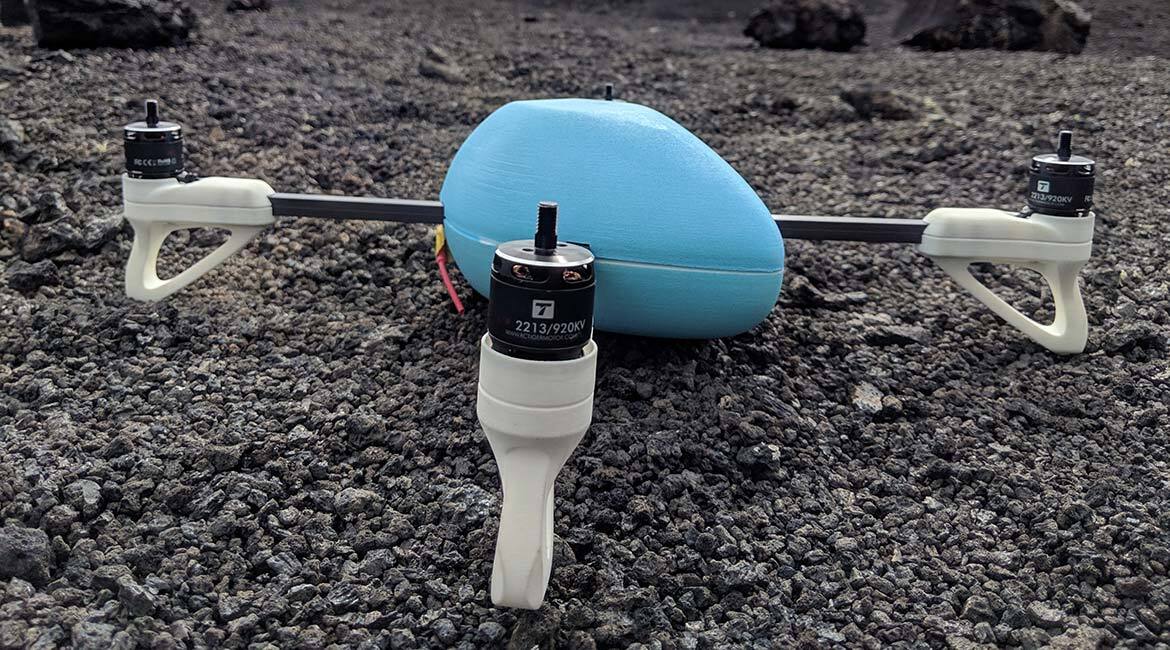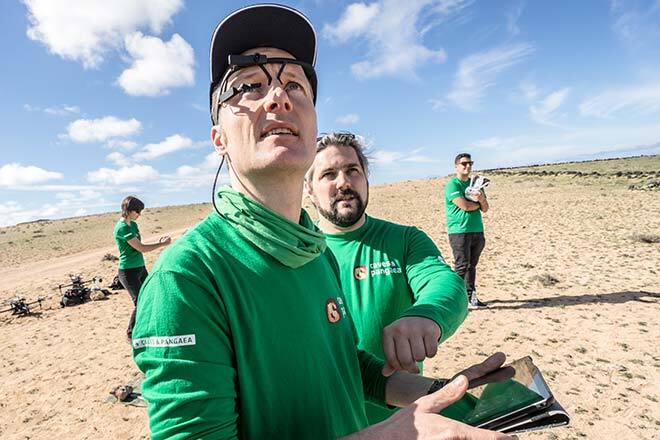Teaching Robots to Work Together

Spiri quadcopter manufactured by Pleiades, a Canadian company (©Benjamin Ramtoula)
Upon reading the curriculum vitae of David St-Onge, the new Professor in the Mechanical Engineering Department, it is plain to see that he does not like labels or traveling the beaten path. In fact, even though he holds a Bachelor, Masters and Ph.D. in Mechanical Engineering, Professor St-Onge has never been shy to venture outside of the engineering field, earning a Master’s in Event Management and a Certificate in Russian Studies. And while he has worked for universities and companies that can easily be associated with the engineering sector, this has not stopped him from collaborating with theatres, museums and visual artists. When it comes right down to it, multidisciplinarity is much more than a passing fancy for David St-Onge: it is ingrained into his whole approach to life.
Having a Group of Robots Collaborate
The new Professor is an expert in designing intuitive interfaces for controlling complex robotic systems. Simply put, he looks for ways in which robots can “speak” to each other in order to make decisions and work as a team, while simplifying the work of the operator. What makes working with a group of robots better than working with only one? According to David St-Onge: “A group of robots is more reliable than a single robot, because accomplishing the mission does not rely on a single individual, but rather on a collective. As a result, if one robot fails, the group can fill in for it, and complete the mission that was assigned to it.” This functionality is particularly important for missions related to crisis situations. For example, robots guided by humanitarian workers can deliver aid to those in need located in hard-to-reach areas.
Designing Intuitive and Natural Interfaces

German astronaut Matthias Maurer at work piloting an aircraft swarm alongside Professor David St-Onge
Before we get to that point, we must find solutions to a number of technical challenges, including two that are of particular interest to David St-Onge: coordinating teams of robots and their ability to autonomously set themselves up in remote areas. The operator, a human being, must instruct the robots as to whether or not they should continue their exploration at one location or another. In order to do so, the operator must be in a position to interpret or understand the behaviour of a group of robots. Professor St-Onge adds: “One experienced person can manage to control four to six robots. So imagine the enormity of the challenge for an untrained person trying to control a larger team of robots!” That is why he is working on designing intuitive and natural interfaces that will be much less taxing on operators in terms of mental workload. This approach will allow operators to take full advantage of the technology without requiring lengthy training in advance.
In parallel with his research, David St-Onge is also teaching a Robotics course (MEC 147) during the Winter 2020 session. He plans to introduce concepts related to mobile robotics and human-robot interaction. He may also use mobile robotic platforms, such as Crazy Flies micro-drones, to apply the concepts that are taught in class.
Of course, when you are passionate about sharing your knowledge, it becomes easy to do, even outside of the classroom. David St-Onge accomplishes this on a regular basis, whether during public events or within the context of interviews on television and radio. He has also committed his efforts to high school students for more than a decade, in connection with the FIRST Robotics Competition.
There is no question that, with his wealth of knowledge, dynamic personality and considerable experience, David St-Onge will succeed in getting his future students to challenge conventional thinking!


